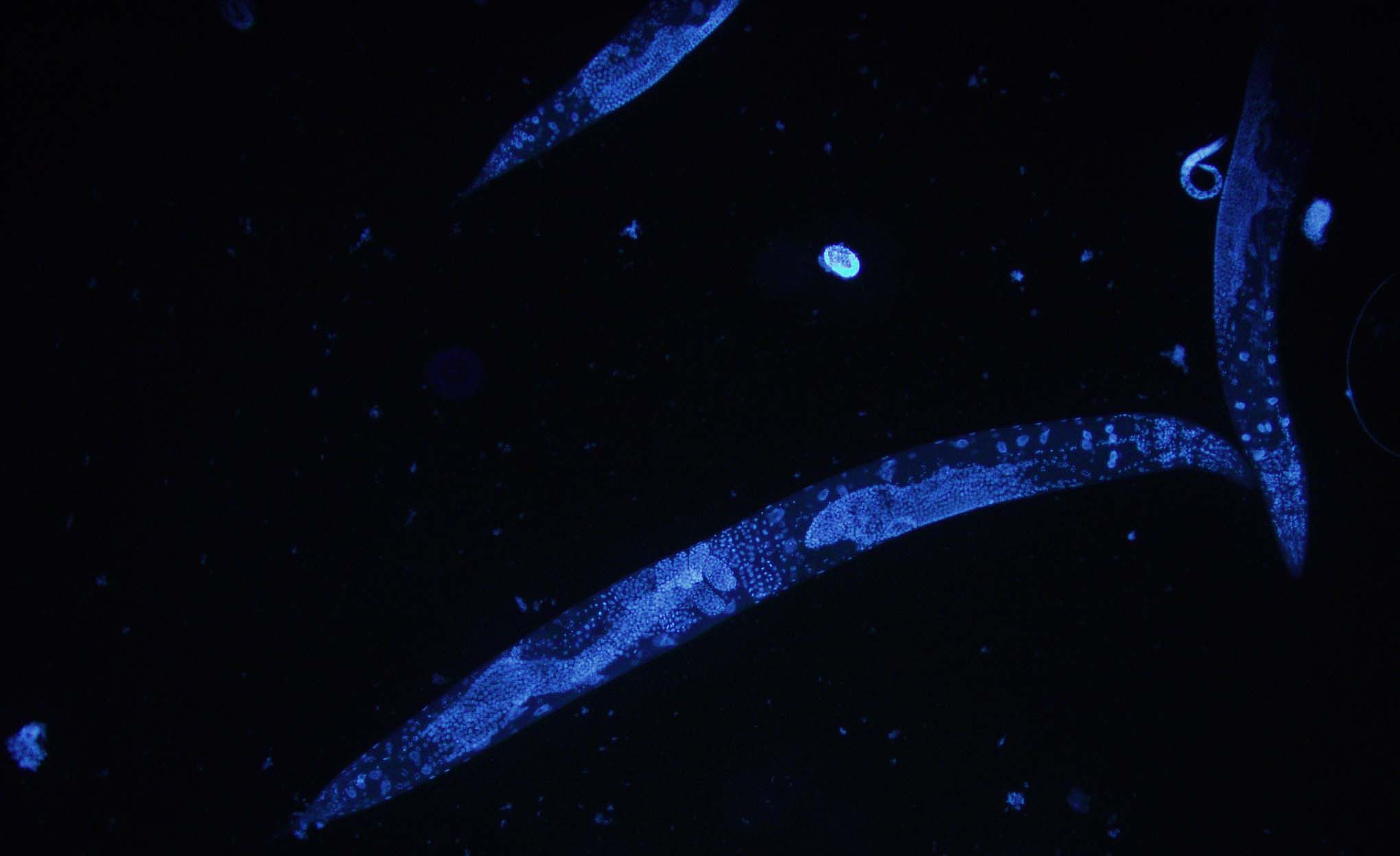A tiny worm, only about one millimeter long, has been able to contribute an incredible wealth of knowledge about the neural pathways responsible for locomotion in all kinds of animals to the scientific community.
Scientists have generated a detailed wiring diagram of C. elegans locomotion neural circuit; but much still remains to be learned about how neurons in this model circuit interact at the synaptic level to produce locomotion behavior.
UConn Health professor of neuroscience Zhao-Wen Wang has received a grant for more than $2 million from the NIH National Institute of Neurological Disorders and Stroke to study the function of gap junctions and chemical synapses in C. elegans neural circuit.
Chemical synapses transmit signals in only one direction (from pre- to postsynaptic neurons) whereas gap junctions may transmit signals in both directions. Chemical synapses can also transmit signals from neural cells to other types of cells. These two connectors enable locomotion in C. elegans and other living organisms by transferring signals from neural cells in the head all the way down to muscle cells.
Wang and his team completed previous research that revealed novel properties of the locomotion neural circuit. They were also able to identify several key molecules of postsynaptic receptors and gap junctions.
This new project seeks to delve deeper into the details of how motor neurons and premotor interneurons operate in this intricate circuit. Wang hopes to do this by gaining a better understanding of their interactions through the gap junctions and chemical synapses which connect them.
By using C. elegans, scientists are able to perform experiments and make observations that would be difficult or impossible using more complex organisms while still revealing universally applicable knowledge.
“Despite its small size and relatively simple anatomy, many cellular and molecular mechanisms are conserved in C. elegans,” Wang says. “Worms are particularly suitable for interrogating the circuit and gene bases of locomotion behavior because they are highly amenable to genetic manipulation and their locomotion neural circuit consists of less than 100 neurons.”
This research will help move the scientific community closer to understanding how various neurons may interact through chemical synapses and gap junctions to direct bodily movement.
Wang received his Ph.D. from Michigan State University in physiology. He completed his postdoctoral training at the University of Pennsylvania and Washington University. In addition to this project, the Wang Laboratory is using C. elegans to study molecular mechanisms of neurotransmitter release and the function and regulation of ion channels.
This project is NIH grant No.: 1 R01 NS109388-01



